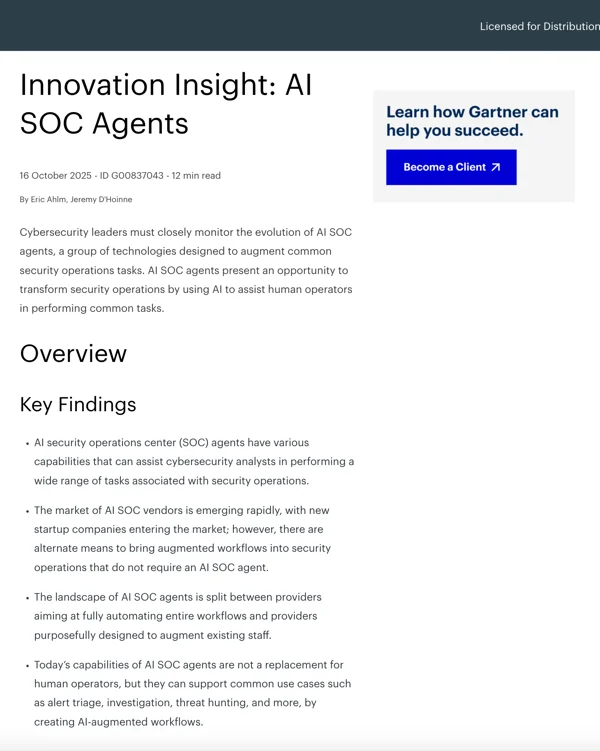
-min.webp)
For more than a decade, SIEM platforms have been the foundation of security operations. They collect logs from across the enterprise, normalize and store them, and allow teams to create rules that correlate suspicious behavior. SIEMs remain essential because they centralize visibility and provide the reporting backbone for compliance. At the same time, the role of the SIEM has always stopped short of investigation. Analysts are still the ones who must chase down alerts, gather evidence from different tools, and decide what the data means.
AI SOC Agents are changing that equation. Rather than replacing SIEMs, they extend their value by taking the alerts a SIEM generates and driving the investigation process forward. The result is a more complete workflow where the SIEM serves as the central data hub and the AI SOC Agents deliver timely, consistent, and deeper investigations.
A SIEM continues to be indispensable for SOCs because it:
These strengths make the SIEM the system of record for events and detections. What it does not do is carry an alert through to a clear determination of risk or impact. That part of the workflow has traditionally fallen to human analysts.
{{ebook-cta}}
AI SOC Agents such as Prophet Security pick up where the SIEM leaves off. When an alert surfaces, the agent initiates an investigation automatically, following lines of questioning that an analyst would normally ask. This includes examining related activity, looking at what happened before and after the triggering event, and pulling data from sources beyond what the SIEM already stores.
The AI SOC Agent reasons about evidence in context, connecting signals across identity, cloud, endpoint, and application logs. It does this with a level of consistency and speed that is difficult to maintain in a human-only workflow. Instead of leaving alerts in a queue until an analyst has time to dig in, every alert can be examined as it arrives. The result is more reliable investigations and a significant reduction in overlooked threats.
The two technologies are strongest when used together. The SIEM consolidates data and provides the basis for detections, while the AI SOC Agent ensures that every alert is investigated thoroughly and efficiently.
A SIEM on its own ensures visibility but still leaves analysts with the burden of time-consuming investigations. An AI SOC Agent without a SIEM has less context and fewer data sources to work with. Together they create a complete system: a platform that collects and correlates signals at scale, paired with an investigative engine that can follow those signals to meaningful conclusions.
Prophet Security integrates directly with SIEMs to provide this balance. The SIEM continues to serve as the central data layer, while Prophet Security automatically investigates alerts as they arrive. This combination shortens investigation times, reduces the number of missed alerts, and helps teams use their human expertise where it has the greatest impact.
Get Gartner's guidance on evaluating and adopting AI SOC agents

